3Dプリントされたレーシングスパロウ!
ついにその時が来ました。レーシングスパロウモデルのヨットを3Dプリントしてみることに決めました。これは、レーシングスパロウモデルの起源からはかなりの逸脱だと思っていました。
レーシングスパロウ3Dは760mmの長さで、PLAフィラメントで印刷されています。このモデルは、そうですね……オレンジ色です!
進捗報告のブログ記事を読んでください。
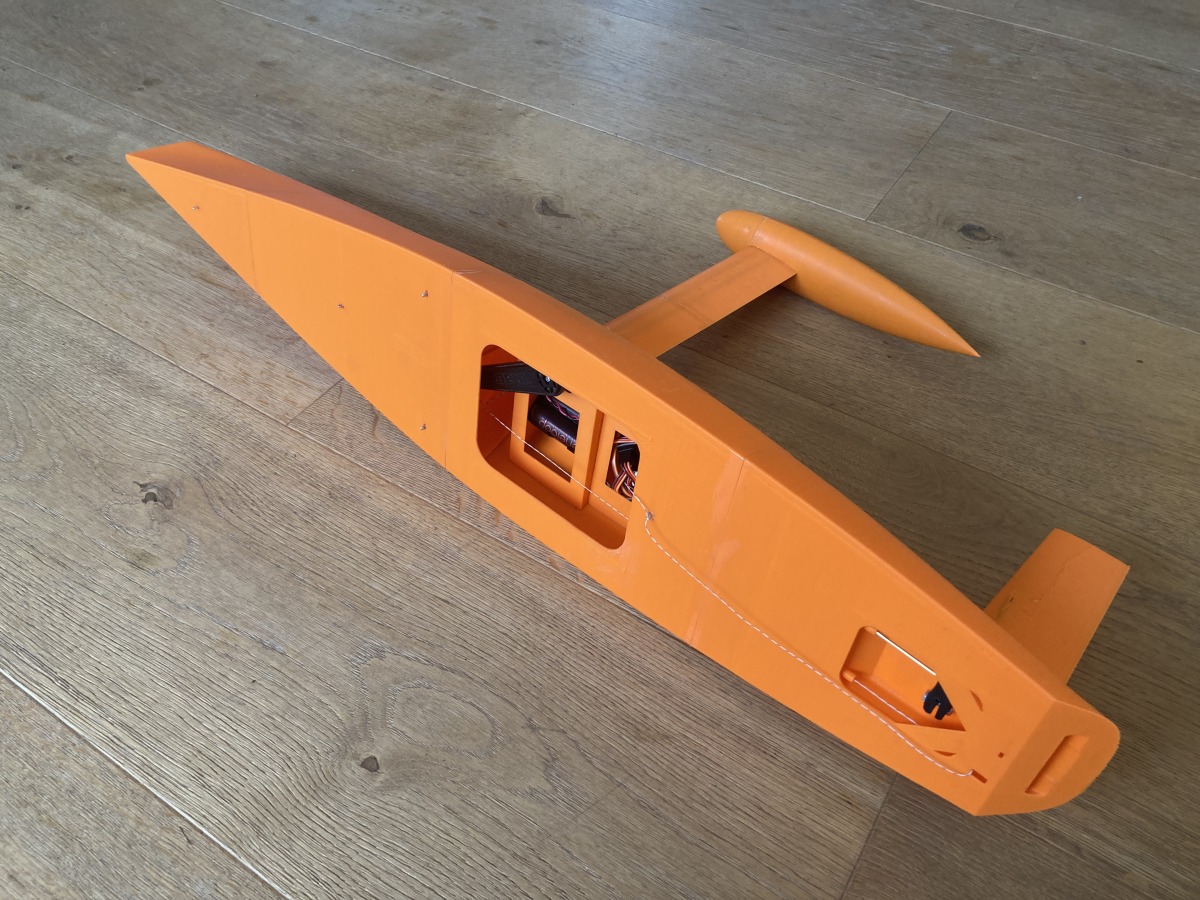
私が抱えていた内部の葛藤は、レーシングスパロウの精神、つまり初心者向けのラジオコントロールヨットを忠実に守ることでした。専門的な工具を使わずに簡単に組み立てられ、この素晴らしい趣味への優しい導入です。
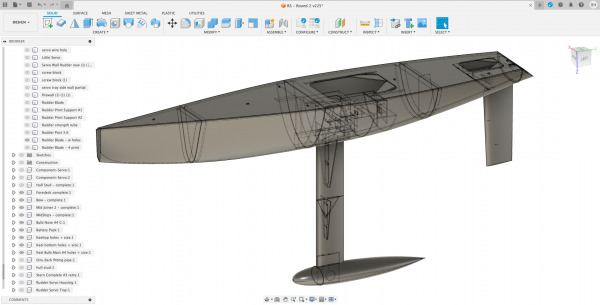
Fusion360でのデザイン
3Dプリントには高価なツールが必要です。私の場合はCreality K1 Max 3Dプリンターですし、それを操作するためのコンピュータースキルも必要です。しかし、一度掘り下げて遊び始めると、この比較的新しい技術がRCヨットの構築プロセスをはるかに簡単かつ迅速にすることができることに気づきます。
設計の非常に正確な再現を、短時間で作成することができます。3Dプリンターを持っていなくても、その部分を外注して部品を印刷し、自宅に届けてもらうことも可能です。このようなボートの作り方は、急速に実行可能で一般的な方法になりつつあります。
このプロジェクトの成果は何になるでしょうか?
目標は、販売用のSTLファイルセットと、組み立てを完了するための指示PDFを用意することです。これには、リギングや帆作りの指示も含まれます。興味が十分に集まれば、すべての部品が組み立てられる3Dプリントキットセットも販売するかもしれません。これを2024年の年末までに提供できることを期待しています。
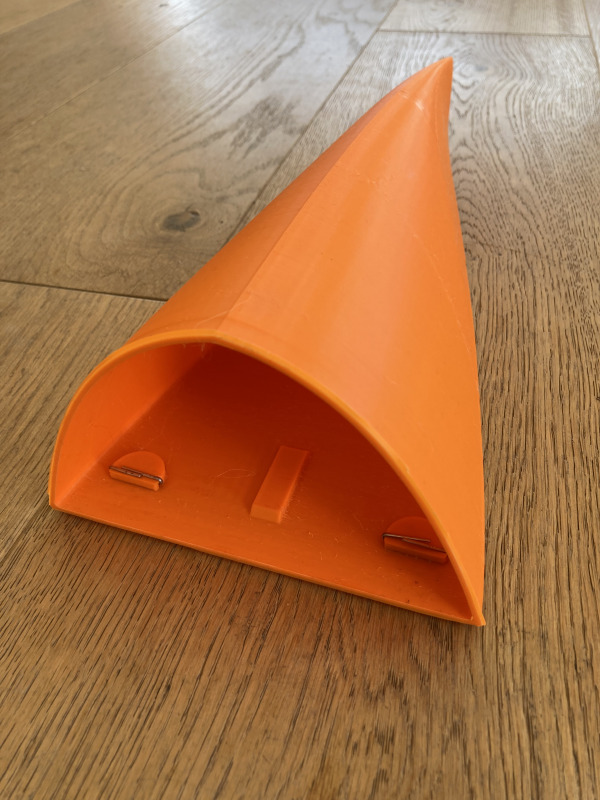 この3Dデザインの主な特徴は何ですか?
この3Dデザインの主な特徴は何ですか?
プロジェクトの主な特徴は以下の通りです:印刷が簡単です。すべての部品はSTLファイルとして印刷可能です。レーシングスパロウ3Dの船体は4つの部分に分かれて印刷されるように設計しました。どの部品も207mmを超えないため、ほとんどの家庭用ホビー用プリンターで印刷できます。各部品には相互に噛み合うフランジがあり、船体を接合するために特別な部品を作る必要はありません。STLをダウンロードして、調整なしで印刷することができます。
このボートで使用する電気系統は、安価なサーボだけで十分で、ウインチは必要ありません。バッテリーは標準のNi-MH充電池で、LiPoバッテリーや電圧変換器は必要ありません。鉛の球は、銃店で購入した鉛の玉を詰める印刷された球体の殻です。ガスで鉛を溶かす必要はありません。このデザインのリギングには、マスト用の1メートルのカーボンチューブと、ブーム用のカーボンチューブを使用します。これらは現在、手に入れやすく安価です。
画像で見るように、船体の固定具は印刷された部品とスプリットピンで作られています。安価で楽しいです!
ここまでの進捗はどうですか?
私は船体、キールと球体、舵の設計、印刷、組み立てを終えたところです。次はリグと帆に進む必要があります。スプレッダー、トップ、固定具などのリギングフィッティングを設計し、印刷する予定です。帆は1枚で、バッテンがテープで固定されます。リグの目的は、シンプルさと材料の入手可能性の原則に従うことです。現在、安価で最適な帆材料を見つけるために、さまざまな材料を試しています。
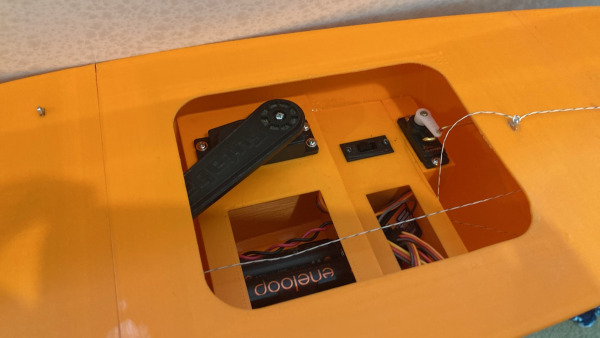 デザインで克服すべき問題は何ですか?
デザインで克服すべき問題は何ですか?
印刷した船体はほとんど強度が十分ですが、テストでこのボートを航行させると、どこを変更する必要があるかが明確になると思います。キールには中心に2x3mmのカーボンロッドがエポキシで接着されていますが、3Dプリントされた部品だけではキールを完全に3Dプリントするには強度が不足しています。2本のカーボンロッドがあっても、キールには若干のたわみがあります。このボートがどれだけうまく航行し、どれだけ長く一つの形を保つかを見るのが楽しみです!
船体と内部部品を接合するためにWest Systemの2成分エポキシを使用しました。現在のニュージーランドの寒い天候は、硬化時間と強度に問題を引き起こしています。再度、ボートのテストが楽しみです!
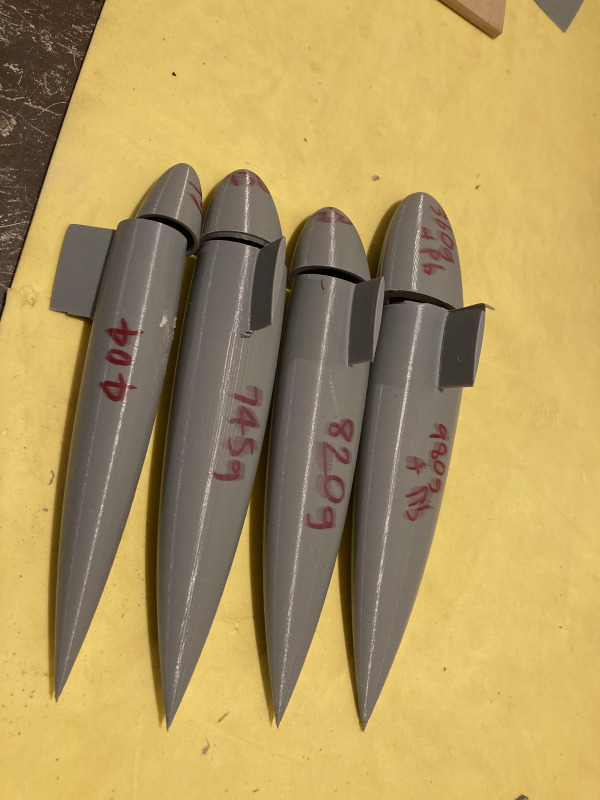 3Dプリントの利点。
3Dプリントの利点。
この実験の最も良い点の一つは、Fusion360でモデルを単純に調整して印刷ボタンを押すことができることです。数時間後、新しい船尾やキールなどが取り付けの準備が整います。海上試験の後、第二のバージョンを作成し、再テストが必要になると思います。デザインに関する問題が解決するまで、STLファイルは公開しません。
ファイルを入手したい場合は、info@racingsparrow.co.nzにメールを送って、待機リストに参加してください。最初の海上試験の後、数ヶ月以内にベータ版のファイルを無料で提供できるかもしれません。
最初の航行の写真と詳細を紹介する別のブログ記事を書く予定です。
印刷を楽しんで!そして、航行を楽しんでください。ブリン・H。